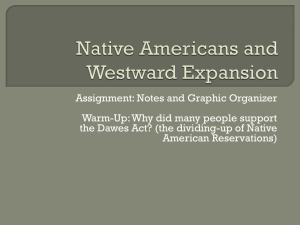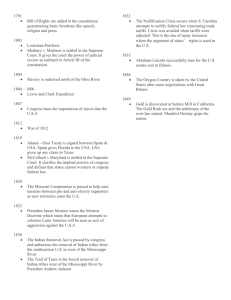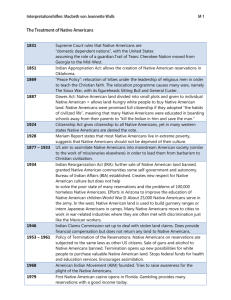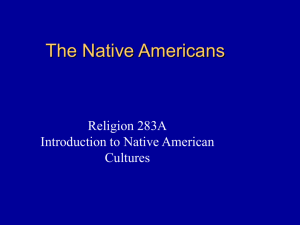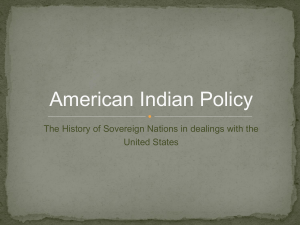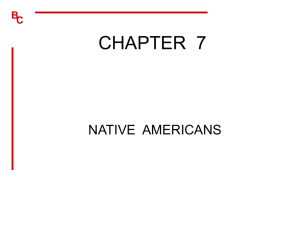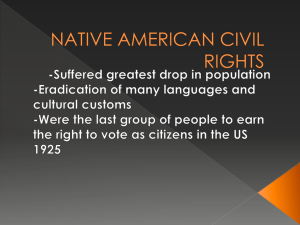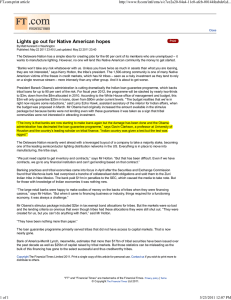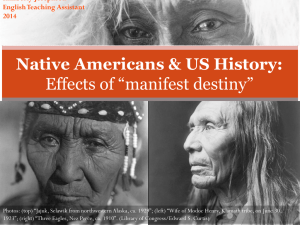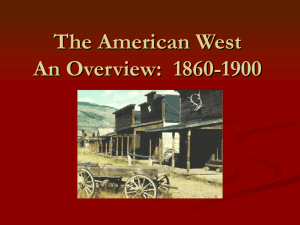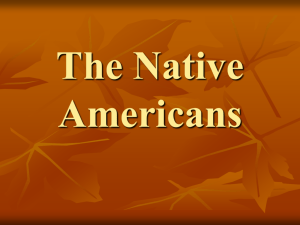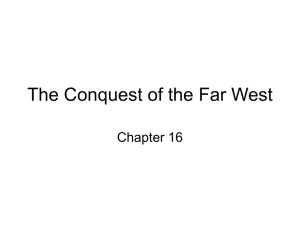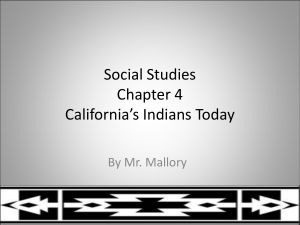United States on Indigenous People - Legal studies
advertisement
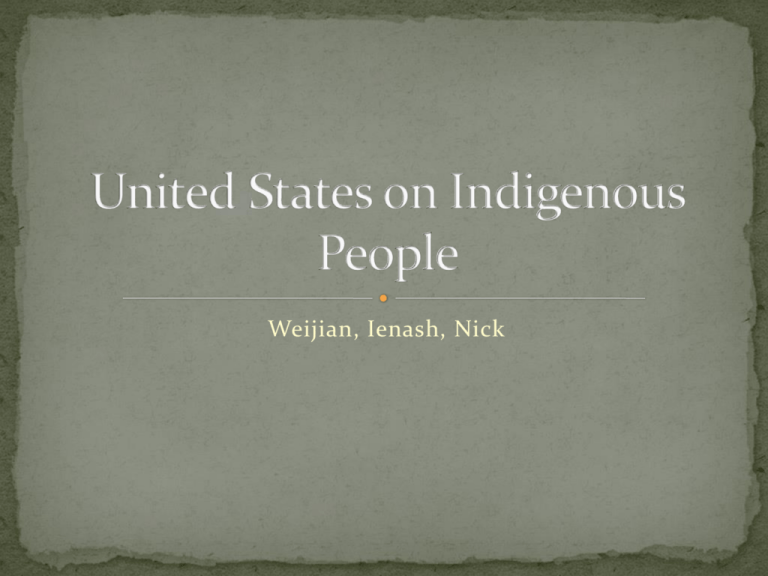
Weijian, Ienash, Nick Native Americans in the United States are on Indigenous peoples from the regions of North America, including continental Untied States, Alaska and the islands of Hawaii. During colonisation, British crown dealt with Native Americans as sovereign nations, entering treaties with various tribes Overtime, the attempt of the British Crown to protect native Americans was not successful After independence, Natives became a matter for the new federal government, not Indigenous states Key policy up to 1820’s – try to separate First Nations and non-First nations or non-Indian people Tensions increased for demand on land US Congress decided to remove Native American tribes to land beyond the Mississippi River Legal Doctrine was established in Supreme Court through three cases that defines the right and jurisdiction of First Nations people Gave these cases the status of ‘domestic dependent nations’ Decisions not popular with Congress and President Andrew Jackson, therefore were ignored Pressure on Federal Government increased to release more land to settlers, policy of restricting tribes to reservations developed 1871, Congress passed legislations that stated that no tribe would be recognised an independent nation Reservations intended to keep First Nations people separated from rest of population Reservations were then noticed to be useful in ‘civilising’ the First Nations People 1887, General Allotment Act passed Legislation gave land to Native people in hope they will break out of poverty and simulate them into American Culture Effect of Allotment Act was a decline in the total amount of First Nations held land Of land that remained, most was desert areas Indian Reorganisation Act 1934, was a sharp change in policy direction Protect the land base if First Nations people and to allow them to set up legal structures to assist with selfgovernment 1953, Congress adopted policy of ‘termination’ Intended to make Indians obtain same laws and privileges as other US citizens Bureau of Indian Affairs was encouraging First Nations peoples to leave reservations and ‘relocate’ Grants were offered to Indians who left the metropolitan areas Indian Civil Rights Act 1968 passed by Congress Required tribal governments to ensure they acted consistently with Bill of Rights Combination of tax advantages and jurisdictions ensured socio-economic and cultural benefits for members of first nations Supportive of comprehensive policy on Native Americans Support for tribal sovereignty and belief that the government should honour it’s treaty obligations ‘American Indian Policy Advisor’ is adopted to ensure direct link between native Americans and the White House He will host a ‘Tribal G8’ which is an annual meeting with Native American leaders to develop a national Indian policy agenda
